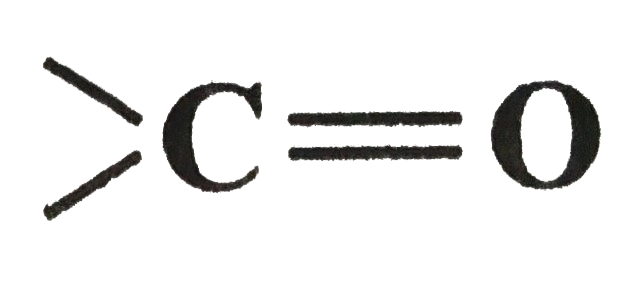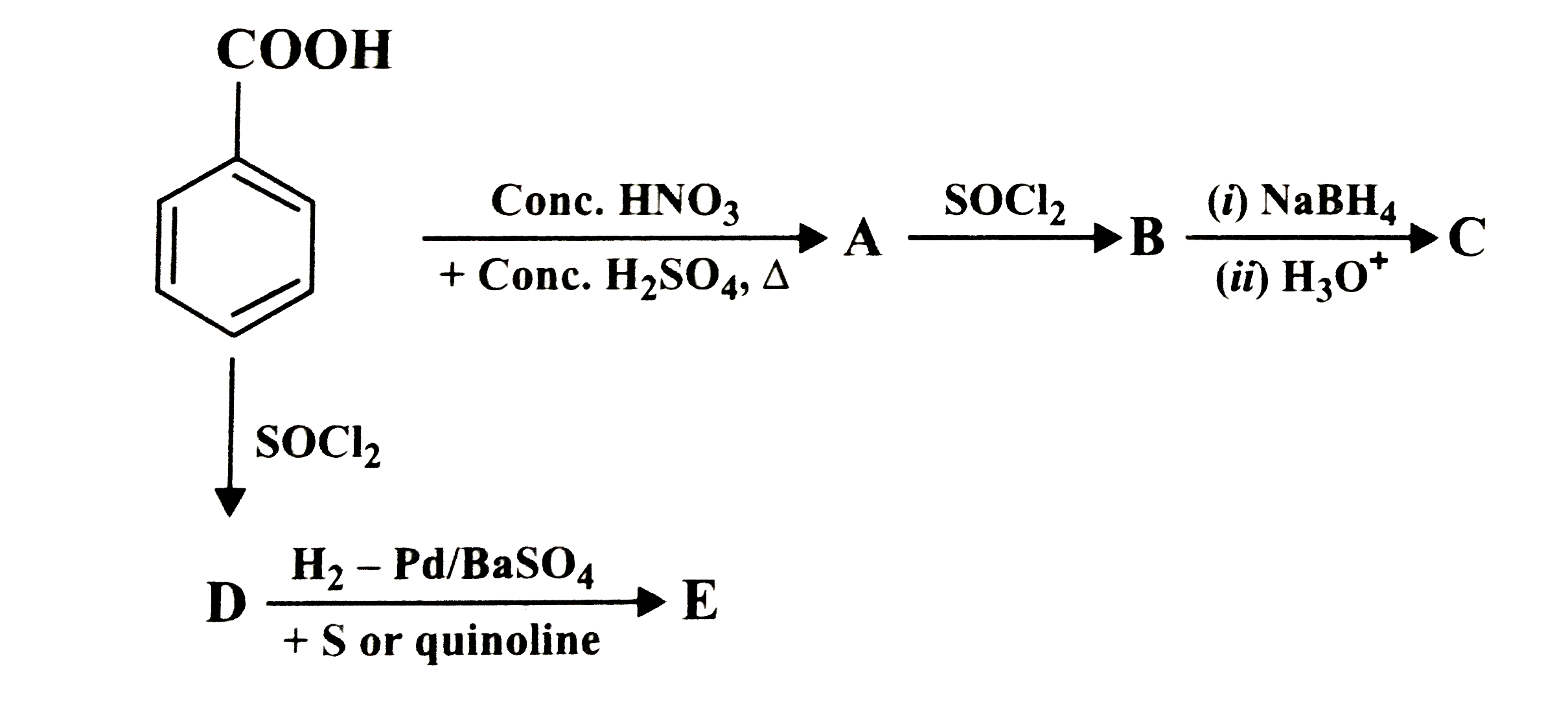Complete Solutions to CONCEPTUAL QUESTIONS of chapter ALDEHYDES, KETONES AND CARBOXYLIC ACIDS of Class 12 book with complete answers and questions
| Class 12 | CHEMISTRY |
| Chapter | ALDEHYDES, KETONES AND CARBOXYLIC ACIDS |
| PRADEEP | CONCEPTUAL QUESTIONS |
| Number Of Questions | 19 |
| Academic Year | 2023-24 |
Although aldehydes are easily oxidisable, propanal can conveniently be prepared by oxidation of propanol by acidified potassium dichromate. Why ?
View SolutionExplain why dialkylcadmium is considered
superior to Grignard reagent for the preparation
of a ketone from an acid chlorine?
View SolutionAlthough
 and
and  have a double bond, they exhibit different type of addition reactions. Explain.
have a double bond, they exhibit different type of addition reactions. Explain.
View SolutionExplain why aldehydes are more reactive than ketones.
View SolutionBenzaldehyde reduces Tollens' reagent but not the Fehling's or the Benedict's solution. Explain.
View SolutionDipole momentts of aldehydes and ketones are higher than those of alcohols, explain.
View SolutionExplain, why `o`-hydroxybenzaldehyde is a liquid at room temperature while `p`-hydroxybenzaldehyde is a high melting solid?
View SolutionIdentity A,B and C in the following reaction
`HC-=CH underset(HgSO_(4)) overset(dil.H_(2)SO_(4))toA overset(dil.NaOH)toB overset(heat)toC`
View SolutionSuggest a suitable oxidising agent for the given conversion.
`(CH_(3))_(2)C = CH-COCH_(3) to (CH_(3))_(2) C= CHCOOH`
View SolutionWrite the structures (A) to (C) for the following reactions:
 .
.
View SolutionAn organic compound (A) having moleclar formula `C_(2)H_(6)O` on oxidation with `Na_(2)Cr_(2)O_(7)//H_(2)SO_(4)` produces a compound `(B)` which reduces Tollens' reagent. Both (A) and (B) produce a yellow soli on treatment with `I_(2)//OH^(-)`. Identify (A) and (B).
View SolutionShow the arrowhead steps for the preparation
of acetic acid by using the following substances in the correct order:
dry `C_(2)H_(5)OC_(2)H_(5),I_(2),Mg,` red P, `CH_(3)OH,CO_(2),` dilute HCl.
View SolutionFluorine is more electronegative than chlorine but p-fluorobenzoic acid is a weaker acid than p-chlorobenzoic acid. Explain.
View Solutionp-Nitrobenzoic acid has higher `K_(a)` value than benzoic acid. Give reasons.
View SolutionCarboxylic acids donot give the characteristic reactions of carbonyl group. Explain.
View SolutionPredict the product of the following reaction

View SolutionIdentify A to E in the following reaction

View SolutionIdentify A to E in the following series of reactions:

View SolutionWrite the structure of A,B,C,D and E in the following reactions:

View Solution
CONCEPTUAL QUESTIONS questions and complete solutions for chapter ALDEHYDES, KETONES AND CARBOXYLIC ACIDS of PRADEEP CHEMISTRY (HINGLISH) of Class 12
All Exercises from PRADEEP Class 12 CHEMISTRY ALDEHYDES, KETONES AND CARBOXYLIC ACIDS
- ADDITIONAL QUESTIONS (LONG ANSWER QUESTIONS)
- ADDITIONAL QUESTIONS (SHORT ANSWER QUESTIONS)
- ADDITIONAL QUESTIONS (VERY SHORT ANSWER QUESTIONS)
- COMPETITION FOCUS JEE (MAIN AND ADVANCED)/MEDICAL ENTRANCE SPECIEAL (ASSERTION-REASON TYPE QUESTIONS) Type - II
- COMPETITION FOCUS JEE (MAIN AND ADVANCED)/MEDICAL ENTRANCE SPECIEAL (MULTIPLE CHOICE QUESTIONS COMPREHENSION TYPE)
- COMPETITION FOCUS JEE (MAIN AND ADVANCED)/MEDICAL ENTRANCE SPECIEAL (MULTIPLE CHOICE QUESTIONS-I WITH ONE CORRECT ANSWER)
- COMPETITION FOCUS JEE (MAIN AND ADVANCED)/MEDICAL ENTRANCE SPECIEAL (MULTIPLE CHOICE QUESTIONS-II WITH ONE CORRECT ANSWER)
- COMPETITION FOCUS JEE (MAIN AND ADVANCED)/MEDICAL ENTRANCE SPECIEAL (MULTIPLE CHOICE QUESTIONS-II WITH ONE OR MORE THAN ONE CORRECT ANSWER)
- COMPETITION FOCUS JEE (MAIN AND ADVANCED)/MEDICAL ENTRANCE SPECIEAL (V. MATRIX-MATCH TYPE QUESTIONS)
- COMPETITION FOCUS JEE (MAIN AND ADVANCED)/MEDICAL ENTRANCE SPECIEAL (VI. INTEGER TYPE QUESIONS)
- COMPETITION FOCUS JEE (MAIN AND ADVANCED)/MEDICAL ENTRANCE SPECIEAL (VII. ASSERTION-REASON TYPE QUESTIONS) Type - I
- CONCEPTUAL QUESTIONS
- CURIOSITY QUESTIONS
- HIGHER ORDER THINKING SKILLS (HOTS PROBLEMS)
- HIGHER ORDER THINKING SKILLS (QUESTIONS AND PROBLEMS WITH ANSWER/SOLUTION)
- IMPORTANT QUESTIONS FOR BOARD EXAMINATION
- NCERT EXEMPLAR PROBLEMS WITH ANSWERS, HINTS AND SOLUTIONS (ASSERTION AND REASON TYPE QUESTIONS)
- NCERT EXEMPLAR PROBLEMS WITH ANSWERS, HINTS AND SOLUTIONS (LONG ANSWER QUESTIONS)
- NCERT EXEMPLAR PROBLEMS WITH ANSWERS, HINTS AND SOLUTIONS (MATCHING TYPE QUESTIONS)
- NCERT EXEMPLAR PROBLEMS WITH ANSWERS, HINTS AND SOLUTIONS (MULTIPLE CHOICE QUESTION-I)
- NCERT EXEMPLAR PROBLEMS WITH ANSWERS, HINTS AND SOLUTIONS (MULTIPLE CHOICE QUESTION-II)
- NCERT EXEMPLAR PROBLEMS WITH ANSWERS, HINTS AND SOLUTIONS (SHORT ANSWER QUESTIONS)
- NCERT EXERCISES
- NCERT QUESTIONS AND EXERCISES WITH ANSWERS (NCERT INTEXT SOLVED QUESTIONS)
- NCERT QUESTIONS AND EXERCISES WITH ANSWERS (NCERT INTEXT UNSOLVED QUESTIONS)
- TEST YOUR GRIP (I. MULTIPLE CHOICE QUESTIONS)
- TEST YOUR GRIP (II. FILL IN THE BLANKS)
- TEST YOUR GRIP (MULTIPLE CHOICE QUESTIONS)
- VALUE BASED QUESTIONS WITH ANSWERS